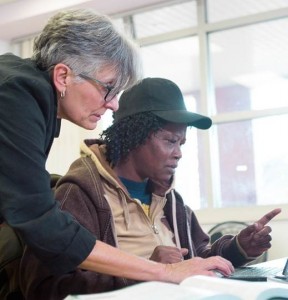
On Aug. 29, the Washington Area Women’s Foundation released new data detailing the status of women’s participation in the D.C. region’s workforce. While female participation in the region surpasses the national average by 11 percent, more can be done to improve economic security for women, according to the report.
“Almost a quarter of the female workforce are stuck in low wage jobs or they’re unemployed,” Jennifer Lockwood-Shabat, president and CEO of Washington Area Women’s Foundation told the AFRO on Aug. 28. “That poses a real problem because many of these women are heading households on their own and they are solely responsible for making ends meet for their families; so not only are these women at a disadvantage but their children are at a disadvantage as well.”
The report, Investing in Change: Trends, Challenges, and Opportunities for Women in the Washington Region’s Labor Force, reveals that the region’s unemployment rates among women vary by race and ethnicity. Black women have the highest unemployment rate among women at 11.6 percent, followed by Latinas (9.6 percent), Asian women (4.9 percent) and White women (4.0 percent).
Further, low-income women from all backgrounds who live near or below the poverty line are less likely to be employed in professional or managerial occupations. Common barriers to obtaining these positions include lack of affordable and reliable childcare options, lack of reliable transportation, discrimination based on criminal history, and blemished credit reports, among others factors.
According to the report, close to 44 percent of all jobs created by 2022 will require workers have some kind of postsecondary education or training. Therefore, organizations that provide access to education and workforce development opportunities make the greatest impact.
Since 1998, the Washington Area Women’s Foundation has funded organizations such as the YWCA to do just that. “We have established a long-term bold goal of ensuring that a majority of women and girls of color, in high need communities have the resources and support they need to be successful personally, professionally and educationally,” said, Tamara Smith, YWCA CEO. “We do that through direct service programming for adults and youth, strategic partnerships and advocacy.”
As a grantee of the Washington Region Women’s Foundation, the YWCA received funds in 2014 to partner with College Success Foundation-DC to launch the pilot program EmpowerGenerations. Beginning this September, the program will serve middle-school girls and their female caregivers to build relationships and offer opportunities to increase economic security for both generations.
One initiative of Goodwill of Greater Washington, another grantee of the foundation, is to provide economic security for single mothers. “They earn enough money to pay for their basic needs like childcare, housing and food,” said Colleen Paletta, vice president of Workforce Development for Goodwill of Greater Washington. “That is why we focus on delivering holistic initiatives that include both training, coaching and access to an array of supportive services.”
On average, the foundation provides funding to at least two dozen organizations each year. The report is a call to action for continued investment from all stakeholders. “We need to come together and think about how do we invest in women and girls whether that’s the business community, whether it’s government, whether it’s private philanthropy,” said Lockwood-Shabat. “How do we come together and invest to ensure that women are prepared to enter the workforce and really be the workers of today and the workers of tomorrow.”


